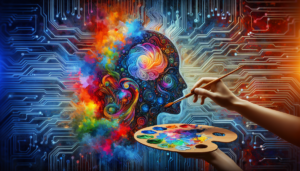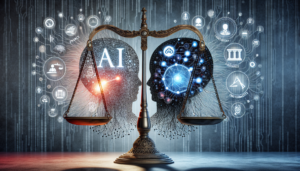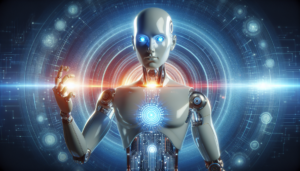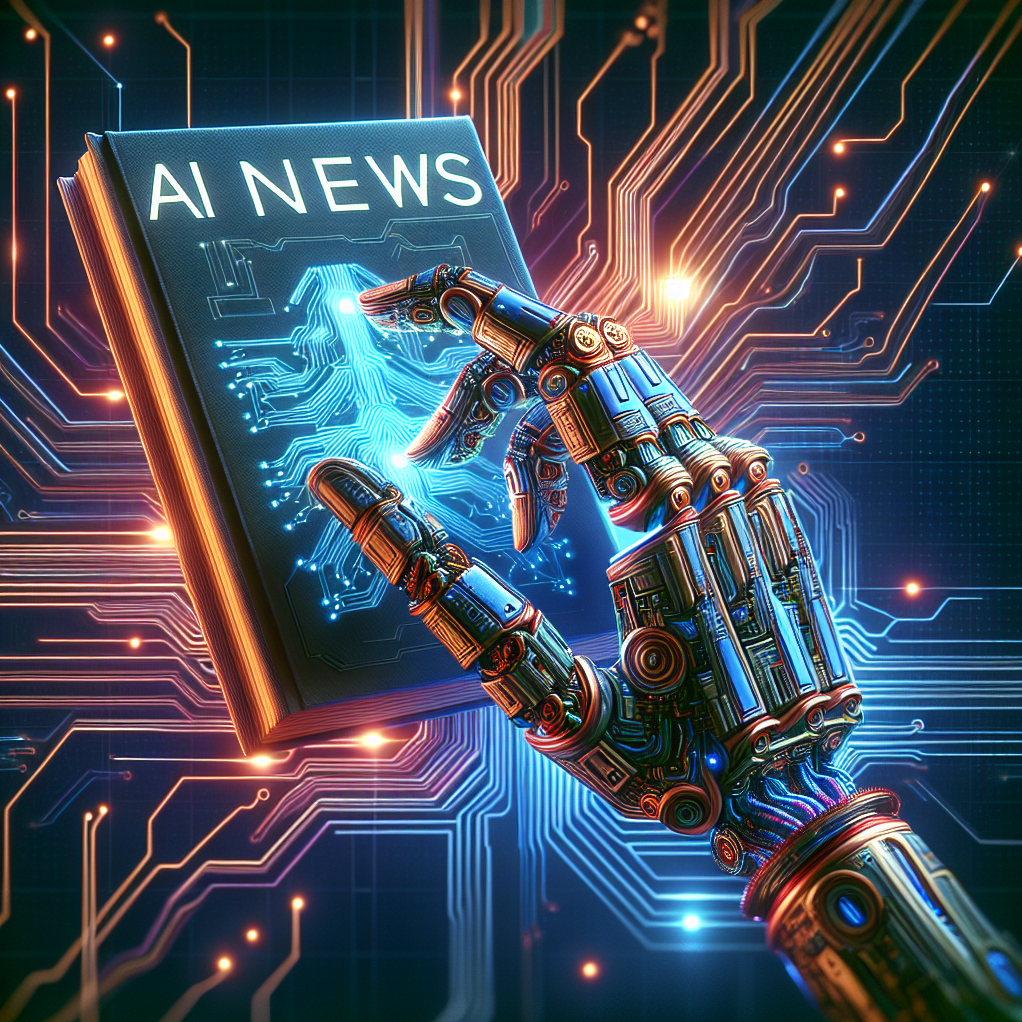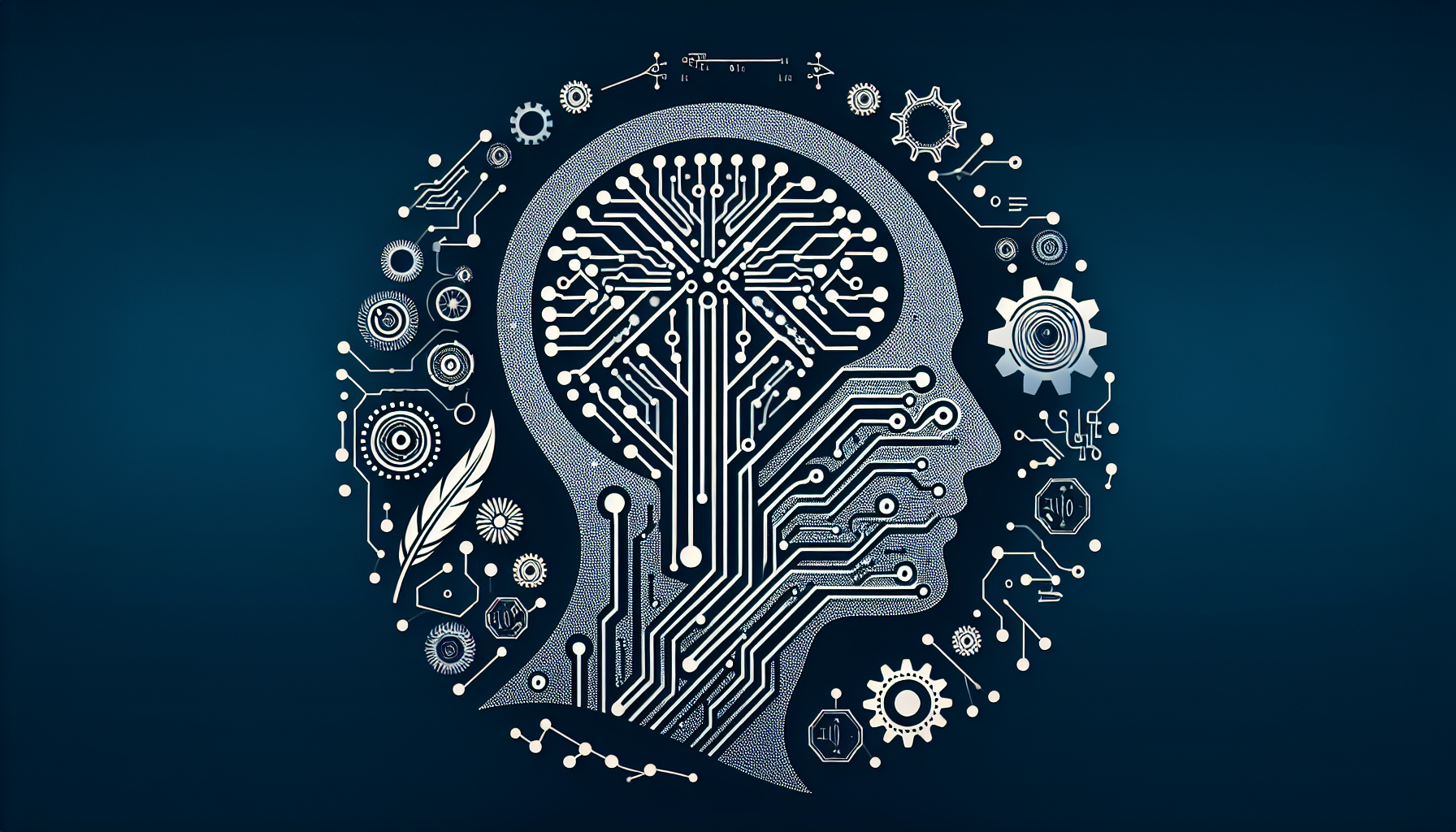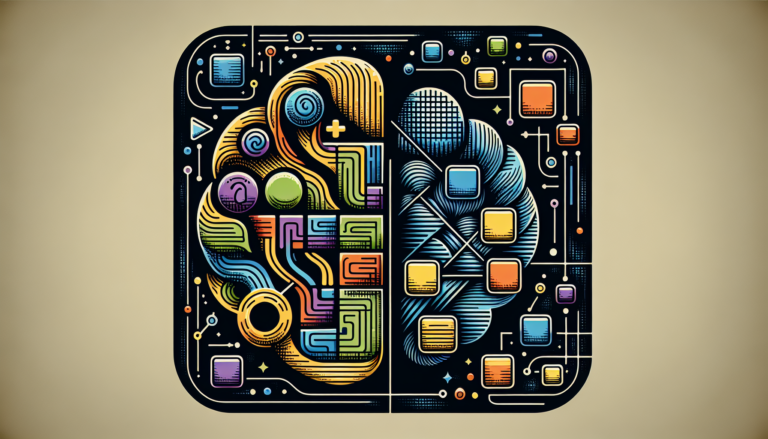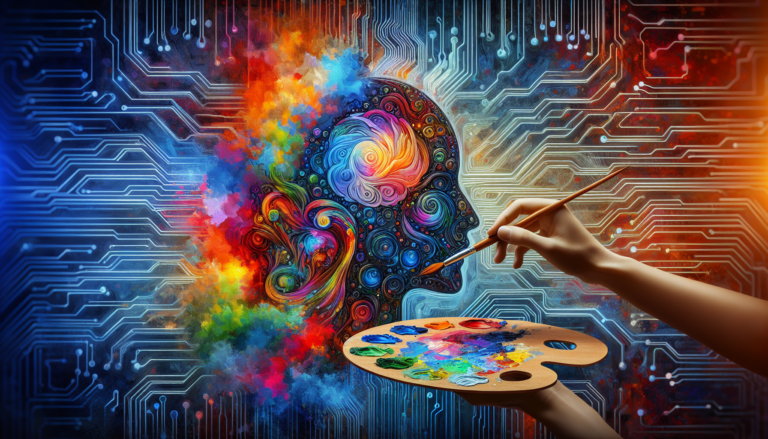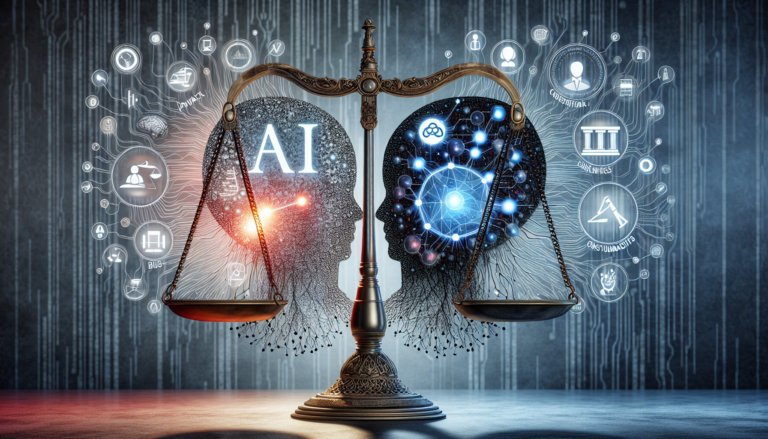Artificial Intelligence (AI) has become a buzzword in recent years, but what does it really mean? In simple terms, AI refers to the ability of machines to perform tasks that would typically require human intelligence. From self-driving cars to voice assistants like Siri and Alexa, AI is transforming the way we live and work. In this article, we will delve into the definition of artificial intelligence, exploring its various applications and implications in our everyday lives. So, buckle up and get ready to embark on an exciting journey into the world of AI!
What is Artificial Intelligence?
The concept of artificial intelligence
Artificial Intelligence (AI) is a vast field of study and research that aims to develop machines and computer systems capable of mimicking human intelligence. It involves creating intelligent systems that can perceive information, reason, learn, and make decisions or take actions based on that information. The main goal of AI is to design and build machines that can perform tasks that would typically require human intelligence.
Defining artificial intelligence
Defining artificial intelligence is not a straightforward task, as it encompasses numerous aspects and approaches. However, at its core, AI refers to the ability of a machine or computer system to exhibit intelligent behavior. This behavior can include problem-solving, pattern recognition, natural language processing, and decision-making.
AI can be broadly classified into two categories: narrow AI and general AI. Narrow AI refers to systems designed to perform specific tasks, such as facial recognition or language translation. On the other hand, general AI aims to create machines that possess the ability to understand, learn, and perform any intellectual task that a human being can do.
The role of machine learning in AI
Machine learning (ML) plays a vital role in the field of AI. It is a subset of AI that focuses on enabling machines to learn and improve from experience without being explicitly programmed. ML algorithms allow computers to analyze large amounts of data, identify patterns, and make predictions or decisions based on that data.
Machine learning can be categorized into three main types: supervised learning, unsupervised learning, and reinforcement learning. Supervised learning involves training a machine learning model using labeled datasets, where the algorithm learns to make predictions or classifications based on the provided labels. Unsupervised learning, on the other hand, involves training algorithms on unlabeled data to identify hidden patterns or structures. Reinforcement learning is a type of ML where an agent learns to interact with its environment through trial and error, receiving feedback in the form of rewards or penalties.
The History of Artificial Intelligence
Early beginnings of AI research
The concept of artificial intelligence can be traced back to the early 1950s when the field of AI was first established as a formal discipline. In 1956, a group of researchers led by John McCarthy organized the Dartmouth Conference, often considered the birth of AI. This conference brought together experts from various fields to discuss the potential of developing intelligent machines.
Key milestones in AI development
Throughout the history of AI, several significant milestones have shaped the field’s progress. In 1956, Allen Newell and Herbert A. Simon developed the Logic Theorist, a program capable of proving mathematical theorems. In the 1960s, researchers began exploring the concept of machine vision, aiming to develop computer systems that could interpret visual information. In 1997, IBM’s Deep Blue defeated chess world champion Garry Kasparov, marking a significant achievement in AI.
Emergence of modern AI
In recent years, there has been a resurgence of interest and advancements in AI. This emergence of modern AI is primarily driven by the availability of large datasets and powerful computing systems. Machine learning techniques, such as deep learning, have significantly contributed to the progress of AI. Deep learning uses neural networks, which are inspired by the structure of the human brain, to process and learn from vast amounts of data.
Types of Artificial Intelligence
Narrow AI
Narrow AI, also known as weak AI, refers to AI systems designed to perform specific tasks and have a narrow focus. These systems are built for specialized applications and do not possess general intelligence. Examples of narrow AI include voice assistants like Amazon’s Alexa, recommendation systems used by streaming platforms, and image recognition systems.
General AI
General AI, also known as strong AI or artificial general intelligence (AGI), aims to replicate human intelligence and possess the ability to understand, learn, and perform any intellectual task that a human being can do. Developing true general AI poses significant challenges and is still a subject of ongoing research and debate.
Superintelligent AI
Superintelligent AI goes beyond general AI and refers to machines that exceed human intelligence in virtually every aspect. Superintelligent AI is a topic of speculation and debate, with concerns regarding the implications and potential risks associated with the development of such systems.
Applications of Artificial Intelligence
AI in healthcare
Artificial intelligence has transformative potential in the field of healthcare. AI can analyze vast amounts of medical data, assist in diagnosing diseases, and develop personalized treatment plans. AI-powered systems can also contribute to drug discovery, streamline administrative tasks, and improve patient outcomes through predictive analytics.
AI in finance
The financial sector can benefit significantly from AI technologies. AI-powered algorithms can analyze market data in real-time, predict market trends, and make more accurate investment decisions. AI can also enhance fraud detection, automate customer service through chatbots, and improve risk assessment models.
AI in transportation
Artificial intelligence is revolutionizing the transportation industry. Self-driving cars, powered by AI algorithms, have the potential to reduce human errors, increase road safety, and improve overall efficiency. AI can optimize traffic management systems, analyze transportation data for better planning, and even assist in the development of autonomous drones for delivery services.
AI in customer service
AI-driven chatbots and virtual assistants are becoming increasingly common in customer service. These AI systems can provide quick and personalized responses to customer queries, handle basic tasks, and streamline customer interactions. Through natural language processing, AI can understand and respond to user inquiries, improving customer satisfaction and reducing the load on human customer service representatives.
Ethical Considerations in Artificial Intelligence
Privacy and data security
Privacy and data security are critical ethical considerations in the field of AI. As AI systems rely on data for learning and decision-making, there is a concern about the collection, storage, and use of personal data. Striking the right balance between data utilization and protecting individual privacy is crucial to ensure ethical AI practices.
Bias and fairness
AI algorithms can sometimes exhibit biases, reflecting biases present in the data they are trained on. This can result in discriminatory outcomes or reinforce existing societal biases. Ensuring fairness and addressing potential biases is vital in AI systems to avoid perpetuating discrimination and promoting equal opportunities for all individuals.
Automation vs. job displacement
The advancement of AI and automation technologies raises concerns about potential job displacement. As machines become capable of performing tasks traditionally carried out by humans, there is a need to address the impact on the workforce. This includes exploring opportunities for reskilling, upskilling, and creating new job roles that align with the changing landscape.
Machine Learning and Artificial Intelligence
Understanding the relationship between AI and ML
Machine learning is a subset of AI that focuses on enabling machines to learn and improve from experience without being explicitly programmed. While AI encompasses a broader spectrum of techniques and applications, machine learning serves as a core component of AI systems.
Supervised learning
Supervised learning is a type of machine learning that involves training a model using labeled datasets. The algorithm learns from the input-output pairs provided in the labeled data to make predictions or classifications on new, unseen data. Supervised learning is commonly used for tasks like image recognition, spam filtering, and sentiment analysis.
Unsupervised learning
Unsupervised learning does not rely on labeled datasets but aims to find hidden patterns or structures within the data. The algorithm learns to identify similarities and differences within the data and group them accordingly. Clustering, dimensionality reduction, and anomaly detection are examples of unsupervised learning techniques.
Reinforcement learning
Reinforcement learning is a learning paradigm where an agent learns to interact with its environment through trial and error. The agent receives feedback in the form of rewards or penalties based on its actions, influencing its learning process. Reinforcement learning has applications in robotics, game playing, and autonomous systems.
Deep Learning and Artificial Intelligence
Exploring neural networks
Deep learning is a branch of machine learning that focuses on training deep neural networks. Neural networks are computational models inspired by the human brain’s structure and function. Deep learning algorithms can learn directly from raw data, without the need for manual feature extraction. The deep layers of the neural network enable the model to learn complex patterns and representations.
Deep learning algorithms
Deep learning algorithms, such as convolutional neural networks (CNNs) and recurrent neural networks (RNNs), have revolutionized several fields. CNNs excel in image and video analysis tasks, while RNNs are well-suited for sequence data, such as language processing and speech recognition. Deep learning has significantly improved the accuracy and performance of AI systems in areas like computer vision, natural language processing, and recommendation systems.
Applications of deep learning in AI
Deep learning has found applications in various domains. In computer vision, deep learning models can accurately detect objects, classify images, and generate realistic imagery. In natural language processing, deep learning architectures enable tasks like machine translation, sentiment analysis, and language generation. Deep learning is also used in recommendation systems, fraud detection, and autonomous vehicles.
The Challenges of Artificial Intelligence
Limitations of current AI systems
Despite the significant progress in AI, current systems have limitations. AI systems can be susceptible to adversarial attacks, where small changes in input data can cause significant misclassifications. AI also struggles with understanding context, common sense reasoning, and lacks true understanding or consciousness.
Ethical dilemmas
Artificial intelligence raises ethical dilemmas concerning the use of AI in decision-making. AI algorithms make decisions based on patterns and data, often without providing explanations for their outcomes. This lack of explainability raises concerns about accountability, fairness, and potential bias in critical areas like criminal justice, loan approval, and hiring processes.
Lack of transparency and interpretability
AI models, especially deep learning models, are often criticized for being black boxes, as their decision-making process is not easily interpretable. This lack of transparency limits their adoption in critical applications where explainability is essential. Efforts are underway to develop techniques for understanding and interpreting the inner workings of AI models.
Future Prospects and Developments in Artificial Intelligence
AI in robotics
The integration of AI and robotics holds great promise for the future. Advancements in robotics combined with AI technologies can lead to the development of intelligent and autonomous robotic systems. These systems can perform complex tasks in various domains, including manufacturing, healthcare, and exploration.
Advancements in natural language processing
Natural language processing (NLP) has made significant strides with the integration of AI. AI-powered chatbots and virtual assistants are becoming increasingly sophisticated in understanding and responding to human language. The development of conversational AI and language models, like OpenAI’s GPT-3, are paving the way for more advanced natural language processing capabilities.
AI in augmented reality
Augmented reality (AR) is another area where AI can have a significant impact. AI algorithms can enhance the immersive experience in AR applications by recognizing objects, tracking movements, and providing contextual information. AR combined with AI has the potential to revolutionize fields like gaming, education, and remote collaboration.
Conclusion
Artificial intelligence continues to evolve rapidly, transforming various industries and aspects of society. As AI advances, it brings both opportunities and challenges. The integration of AI in healthcare, finance, transportation, and customer service has the potential to improve efficiency, enhance decision-making, and revolutionize various domains. However, ethical considerations, such as privacy, bias, and job displacement, need to be carefully addressed to ensure the responsible and beneficial use of AI. Continued research and advancements in the fields of machine learning and deep learning will shape the future of AI, enabling new applications and capabilities. As AI technology continues to advance, it is essential to monitor its implications for society, ensuring that AI systems are developed and deployed ethically and responsibly. With the ongoing progress and development in the field, artificial intelligence holds immense prospects for the future.





